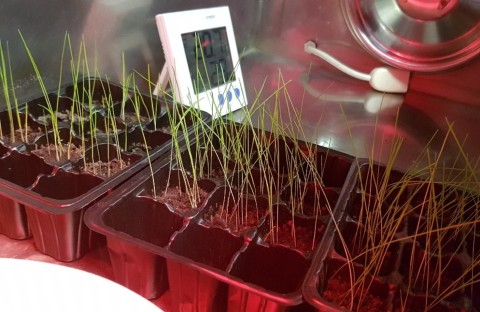
Biodegradable materials as soil conditioner to favour plant growth
The University of Trento, a partner of ONEforest, is contributing with its experience and knowledge in the field of material science available to develop and produce a biodegradable composite material that is aimed for the protection and sustain of plants. This material should be used as a topsoil coating or a soil conditioner.
After a careful study of a literature review, the materials that have been selected to produce this composite are xanthan gum (biodegradable polymer able to absorb a lot of water) and beechwood fibres. These materials have been widely characterized in terms of thermal, morphological, and rheological properties. Then, composite materials were prepared by mixing the two components in different formulations (Figure 1).
After the preparation of 9 different compositions, the produced composites have been mixed with soil taken by a forest near the city of Trento (Italy). Grass seeds have been planted in these soil + composite materials (Figure 2) and they also have been planted in the soil without any other soil conditioner so to have a reference. The growth of grass has been evaluated and monitored under controlled conditions of light, temperature, and humidity (Figures 3 and 4). After 18 days the grass has fully grown well in all types of soil + composite meaning that the materials selected are not harmful to the plants.
Then, after the complete grass growth, the study focused on monitoring which plants resist better without the addition of water (Figure 5). It has been seen that in some pots with a specific formulation of soil + composite (xanthan gum and wood fibres) the grass is still alive with respect to the reference soil without any composite addition. In fact, the addition of xanthan gum and wood fibres to the soil helps to retain the water that is provided to the plant more gradually with respect to the common soil. In this way, plants could resist longer also in drought conditions.



Figure 3. Grass growth after 7 days in a sealed box under controlled conditions of light, temperature and humidity.

 Figure 5. Grass after 7 days without addition of water. In some pots with particular soil+composite formulation the plant resist better respect to the reference soil.
Figure 5. Grass after 7 days without addition of water. In some pots with particular soil+composite formulation the plant resist better respect to the reference soil.

